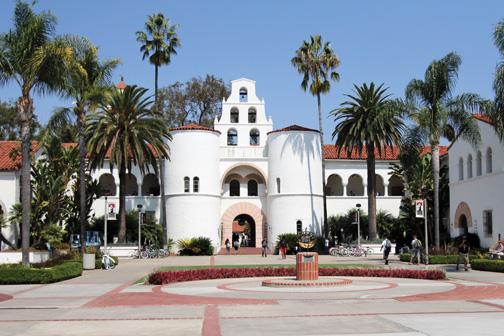San Diego State tends to be the butt of jokes at other local universities. I’m sure most students and faculty have heard the negative stereotypes of the school, such as the nickname “STDSU.” In fact, the definition of STDSU on urbandictionary.com is listed as SDSU. The stereotype regarding sexually transmitted diseases comes from a 2007 syphilis outbreak on campus. The STD rate at SDSU has been rumored to be one out of four but there is no valid survey or data to prove it. It gets blown out of proportion at times on the “SDSU Confessions” Facebook page and by stereotypes about sororities and fraternities.

The urbandictionary.com definition also blows two other SDSU stereotypes out of proportion: It’s a wild party school and a fourth-tier academic school. The school earned its reputation as a party school—ranked No. 26 nationally by Fiesta Frog for top party schools—but there’s more to SDSU than a bunch of parties on weekends. What’s lost in this stereotype is that partying is a part of college life in virtually any public university. Schools praised for academics, such as University of California Santa Barbara, rank higher than SDSU among party schools on the same list.
Such stereotypes cast a misleading light about what SDSU really stands for. While there certainly isn’t a shortage of parties here, judging the school based on how many keggers its student body has is not a valid way to determine the quality of education a student receives here. While many students do party, they are also finishing their schoolwork. In fact, statistics show SDSU is a surprisingly successful academic school.
Among first-time freshmen, the school has a 66 percent bachelor’s degree graduation rate for students who finish within six years, the second highest in the California State University system next to California Polytechnic State University San Luis Obispo. SDSU is also tied for the third highest retention rate at 89 percent.
Furthermore, the graduation rate nationally for public institutions is 55 percent, which SDSU easily surpasses. Some people might dismiss this statistic by arguing the school offers easy classes. However, a deeper look reveals SDSU is a tough school to get into, with impacted majors ensuring students are already successful once admitted. SDSU has the third lowest freshmen acceptance rate in the CSU system and incoming freshmen had an average 3.6 high school GPA.
While these numbers aren’t as high as UC San Diego, comparing the two schools is like comparing apples and oranges. UCSD, similar to all schools in the UC system, is meant to be a top-tier academic school and is challenging for many lower-income students to afford.
SDSU has many nationally top-ranked programs, such as business administration and research. US News and World Report ranked the campus’ undergraduate and graduate business programs among the nation’s best for 2012 and 2013. The school has also been designated as a “research university with high research activity” by the Carnegie Foundation for the Advancement of Testing and received more than $1.5 billion in grants and contracts for research since 2000. The school also ranks high in programs such as education, psychology and public affairs, as well as being highly ranked in ethnic diversity.
Not every school has to be a first-tier academic school to be a good school. Those schools would be nice to attend if they were affordable. However, just because there are higher tier universities does not make SDSU bad. The fact is, SDSU is one of many good universities in San Diego, and one of the highest-ranked schools in the CSU system. Stereotypes tend to distort the images of the school and should not be taken seriously. Don’t buy into them or perpetuate them more than they already are. SDSU is more than just a party scene; it’s an academic institution no different, if not better, than most universities of its kind.







